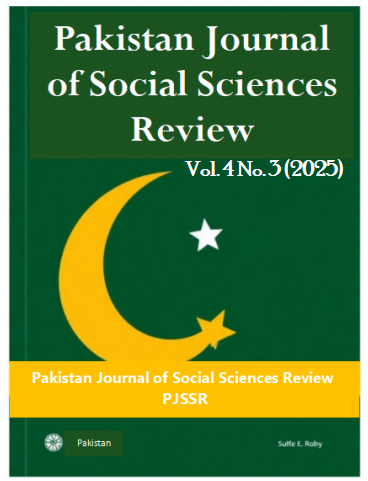COUNTERING INSURGENCY IN BALUCHISTAN: THE ROLE OF CPEC, DEVELOPMENT-BASED INTERVENTIONS AND YOUTH INITIATIVES
Abstract
Baluchistan, Pakistan’s largest yet most strategically significant province, remains trapped in a cycle of insurgency, fueled by decades of political exclusion, economic marginalization, and unresolved ethnic grievances. Despite vast natural resources and its central role in the China–Pakistan Economic Corridor (CPEC), the province has struggled to achieve peace. This study argues that a durable solution lies not in force alone, but in a comprehensive, people-centered counterinsurgency strategy that fuses development, infrastructure, and youth empowerment. Anchored in David Galula’s counterinsurgency theory, which advocates an 80:20 ratio of non-kinetic to kinetic engagement. The research paper explores how legitimacy, public trust, and inclusive governance can replace military dominance as the foundations of peace. It critically examines how federal and provincial interventions—such as the South Baluchistan Development Package, CPEC projects, and youth-focused education and employment schemes—can address root causes of extremism when implemented transparently and equitably. The findings highlight a clear imperative: without socio-political inclusion, infrastructure and security gains will remain fragile. Moreover, peace in Baluchistan demands a paradigm shift from coercion to collaboration, where state-building is driven by justice, opportunity, and local ownership. Only then can the province transition from a conflict zone to a corridor of stability and shared prosperity.


